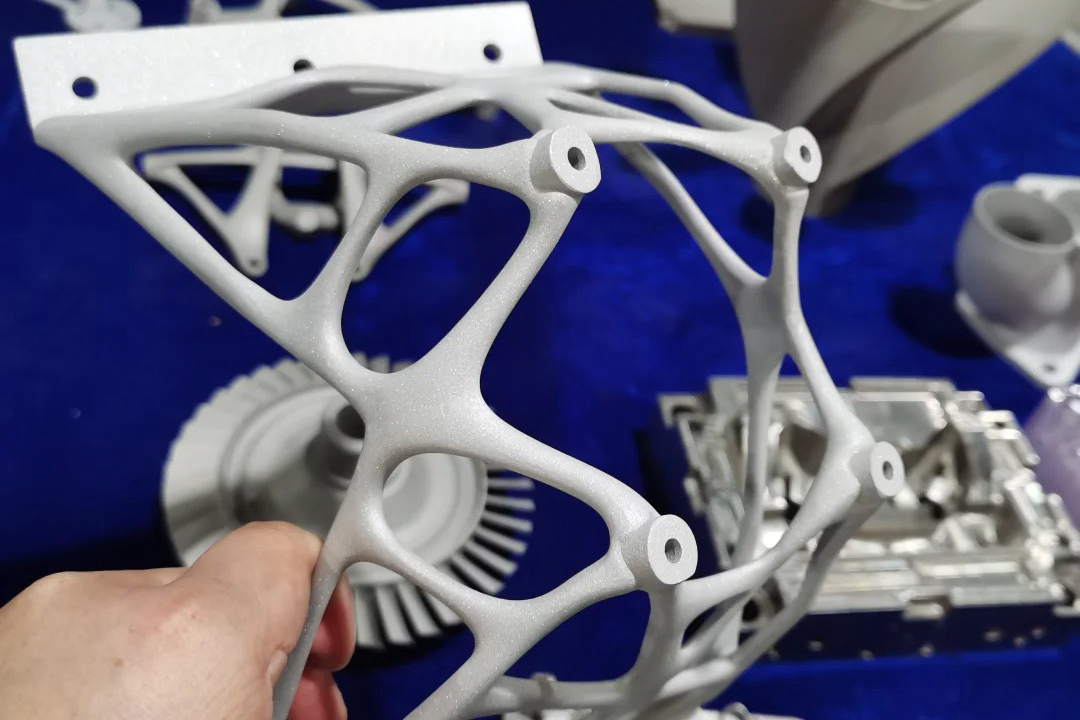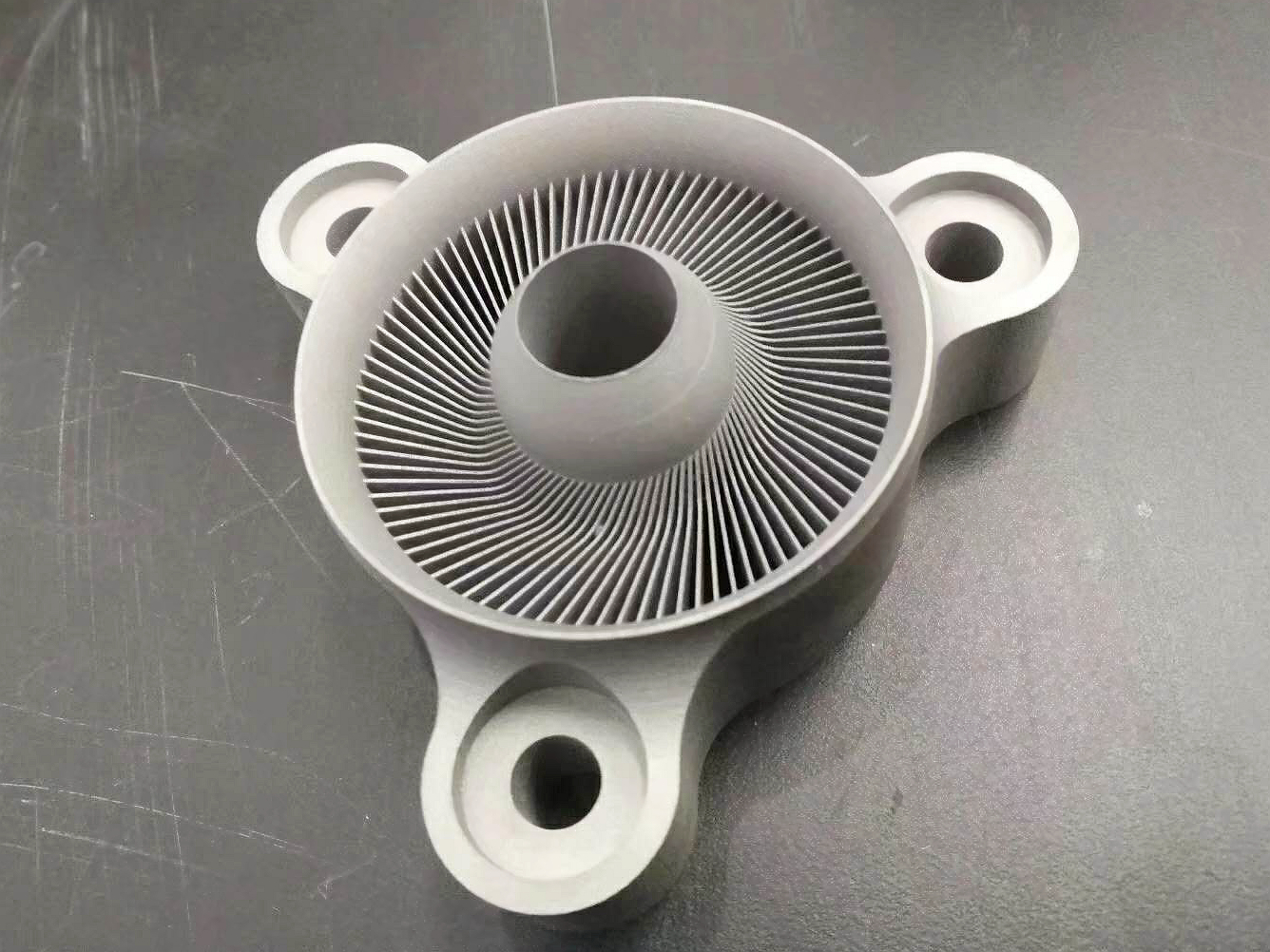Stainless Steel SUS420
SUS420 3D Printing Materials Introduction
Stainless Steel SUS420 is a high-carbon martensitic stainless steel known for its excellent hardness, abrasion resistance, and moderate corrosion resistance after heat treatment. It is widely used in applications requiring sharp edges, impact strength, and dimensional stability.
Through stainless steel 3D printing, SUS420 enables the production of complex wear parts, molds, surgical tools, and high-performance mechanical components with post-print hardening for demanding environments.
SUS420 Similar Grades Table
Country/Region | Standard | Grade or Designation |
|---|---|---|
USA | ASTM | 420 |
UNS | Unified | S42000 |
ISO | International | X20Cr13 |
China | GB/T | 2Cr13 |
Germany | DIN/W.Nr. | 1.4021 |
SUS420 Comprehensive Properties Table
Category | Property | Value |
|---|---|---|
Physical Properties | Density | 7.75 g/cm³ |
Melting Point | 1450–1510°C | |
Thermal Conductivity (100°C) | 24.9 W/(m·K) | |
Electrical Resistivity | 55 µΩ·cm | |
Chemical Composition (%) | Iron (Fe) | Balance |
Chromium (Cr) | 12.0–14.0 | |
Carbon (C) | 0.15–0.40 | |
Manganese (Mn) | ≤1.0 | |
Silicon (Si) | ≤1.0 | |
Mechanical Properties | Tensile Strength (hardened) | ≥850 MPa |
Yield Strength (0.2%) | ≥600 MPa | |
Hardness (HRC, heat treated) | 48–56 | |
Elongation at Break | ≥12% | |
Modulus of Elasticity | 200 GPa |
3D Printing Technology of SUS420
SUS420 is compatible with Selective Laser Melting (SLM), Direct Metal Laser Sintering (DMLS), and Binder Jetting. These technologies enable rapid fabrication of high-hardness parts with intricate features and tight tolerances.
Applicable Process Table
Technology | Precision | Surface Quality | Mechanical Properties | Application Suitability |
|---|---|---|---|---|
SLM | ±0.05–0.2 mm | Excellent | Excellent (post-hardened) | Cutting Tools, Surgical Parts |
DMLS | ±0.05–0.2 mm | Very Good | Excellent | Mechanical Assemblies, Molds |
Binder Jetting | ±0.1–0.3 mm | Moderate | Good (with HIP) | Large Structural Wear Components |
SUS420 3D Printing Process Selection Principles
SLM is preferred for tool components and blades where high hardness and dimensional accuracy (±0.05 mm) are critical.
DMLS delivers balanced surface quality and strength, ideal for functional mechanical parts with moderate wear exposure.
Binder Jetting is suitable for large, complex forms followed by HIP and quenching to enhance density and toughness.
SUS420 3D Printing Key Challenges and Solutions
High carbon content can lead to cracking during cooling. Controlled preheat and optimized scan strategy minimize thermal shock during the printing process.
To achieve target hardness (HRC 50+), parts must be quenched at 980–1050°C and tempered at 150–200°C for stress relief and microstructure refinement.
Surface roughness can impair tool cutting edges. Post-processing via CNC machining and grinding is essential to sharpen features and enhance durability.
For improved corrosion resistance, passivation and protective coatings are applied, especially for humid or medical environments.
Typical Post-Processing for SUS420 3D Printed Parts
Quenching and Tempering significantly increases hardness and wear resistance for tools and load-bearing parts.
CNC Machining ensures critical dimensional precision and edge accuracy in cutting and mechanical components.
Grinding or Polishing enhances surface quality and prepares contact areas for dynamic interfaces and wear zones.
Passivation improves oxidation resistance, extending component life in mildly corrosive and moisture-exposed environments.
Industry Application Scenarios and Cases
SUS420 is widely used in:
Tooling and Cutting: Blades, drill bits, punches, and precision guides with hardened edges.
Medical Devices: Surgical scissors, scalpels, and orthopedic instrument components requiring biocompatibility and high hardness.
Industrial Machinery: Bushings, cams, and support elements exposed to friction and abrasive contact.
Energy Sector: Wear-resistant valves, nozzles, and rotating shafts in turbines and pumps.
One tooling case used SLM-printed SUS420 cutting dies post-heat treated to HRC 52, achieving 40% longer tool life and reduced machining waste.
FAQs
What is the maximum hardness achievable in 3D printed SUS420 parts?
Which applications are ideal for SUS420 additive manufacturing?
How does SUS420 compare to SUS410 in mechanical performance?
What heat treatment is required to harden SUS420 after printing?
Can SUS420 be used in medical-grade 3D printed tools?



